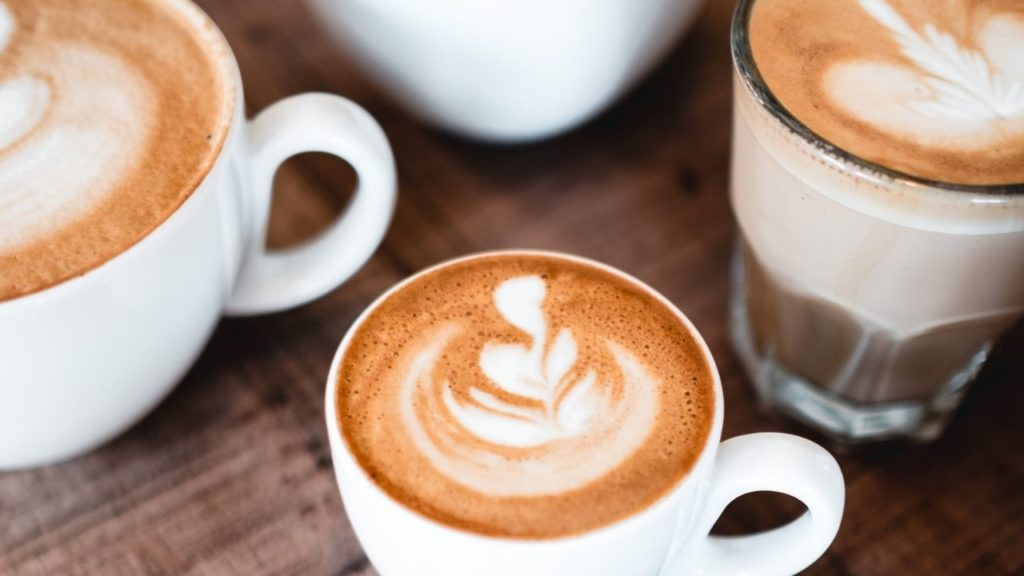When facing a coffee shop menu for the first time, it can be confusing. Flat White, Cappuccino, Macchiato… There are many drinks and some are totally unknown to you.
The problem is that the barista is in a rush and customers are waiting behind you. You can't imagine taking the time to ask for the details of each of the drinks offered. So you end up ordering a cappuccino: at least you won't be disappointed!
What if you were able to make a real choice? For that, let's start by talking about one of the drinks that is more and more talked about, I named: the flat white .
What is a Flat White?
The flat white is an espresso and milk based drink .
Well, as we have just seen, there are a lot of them, espresso and milk-based drinks… So that doesn't help us much!
Here are the elements that generally differentiate coffee shop drinks:
- the espresso / milk / milk froth ratios
- the total quantity in cup
Here, it is the flat white recipe that interests us, here is the most widespread:
- 2 shots of espresso, i.e. 60ml
- 120ml of hot milk with 1cm of microfoam
- 180ml total

This recipe is the most widespread, but beware: not all flat whites are necessarily served the same way.
This recipe is indeed not unanimous. It should be kept in mind that not all baristas have had the same training and do not have the same habits.
Thus, depending on the regions of the world and the working methods, it is possible to encounter flat whites which do not have a layer of milk froth. Some baristas, in fact, are careful not to pour foam on the surface of the drink. Rather, they make sure to leave the crema intact on the top of the cup.
What is certain is that there are many differences between the flat white and the other coffee shop classics that are the latte and the cappuccino.

Difference with a cappuccino
The cappuccino consists of:
- ⅓ espresso
- ⅓ milk
- ⅓ milk froth
It's easy to remember and what's more, unlike the flat white, it is indeed this recipe that is normally served in all the coffee shops in the world. It's still more practical! 😅
Overall, in cup we find an espresso more diluted than in a flat white . We find less of the character of the espresso with a higher proportion of milk.
In addition, the cappuccino offers a much thicker layer of foam. The texture of the drink therefore has nothing to do. Discover my article dedicated to homemade cappuccino, here .
Difference between a flat white and a latte
The latte is closer to the flat white than the cappuccino. Indeed, the thickness of milk foam of a latte is thinner and that of a cappuccino.
Be careful though, there are indeed differences (otherwise, why give different names? 🤭).
The first main difference is the overall amount of drink. A flat white is around 180 ml while a latte is usually served with a capacity of 200 to 230 ml.
But that's not all since for this capacity, the latte recipe requires only one shot of espresso, unlike the two shots of the flat white . The latter is therefore definitely more intense than its two friends, the latte and the cappuccino.
The recipe for a classic latte is as follows:
- 1 shot of espresso (30 to 50 ml)
- 150 ml hot milk (frothed to obtain a thin layer of milk froth on the surface)
To know: You can sometimes find “large slats”. Generally, these contain two shots of espresso, but the quantity of milk increases too!
Where does Flat White come from?
The flat white is relatively recent if we compare its appearance to that of the cappuccino , which is several centuries old! It seems that flat white was created in the 1980s . We do not have the exact date since even its origin is not really known.
In fact, two countries are vying for the title of inventor of flat white : Australia and New Zealand . Around 1985, two Australian cafes appeared to feature the drink on their menus, but Café DKD, located in Auckland and another New Zealand cafe (in Wellington) also claim to be the originator of flat white .
I don't know if one day we will be entitled to the end of this story... 🧐
What is certain, however, is the origin of its name. The expression “flat white” refers to the very fine (flat) milk (white) microfoam on the surface of the drink. The froth is indeed much “flatter” than that of a cappuccino, which at the time was already a very popular drink in coffee shops.

